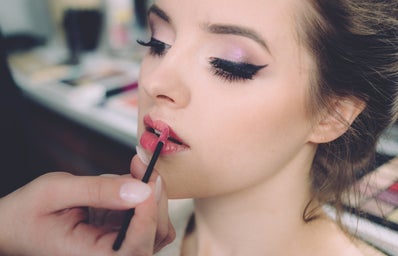Shaving “down there” always seems like a good idea at first – that is, until all those little unwanted red bumps show up! Whether you’re planning on just cleaning some stray hairs around the edges or going for a more complete effect, it often doesn’t turn out as smooth as you hoped. But that stinging, itchy rash isn’t completely inevitable. We’re here with all the best tips to help you prevent razor burn down there!
First of all, let’s talk about what razor burn is. Dragging a razor across your skin gets rid of hair, but also removes the top layer of skin, and it causes irritation. It can get red and inflamed, and be fairly unpleasant, though it usually clears up if left alone for a day or two. If you have constant razor burn, though, you might also notice some razor bumps. Razor bumps are when the hair follicles get infected, and they can be really painful! The pores get clogged with dead skin and fill with bacteria, and they sometimes resemble pimples in your bikini region. Both of these conditions, though, are totally preventable and treatable!
Use a good razor
As far as razors go, sharper is always better. When the blades get dull, they are more likely to do damage to your skin. Dull blades mean rough edges on the hair, which can lead to irritation and ingrown hairs, and you’ll be tempted to use too much pressure, creating painful cuts in your skin. For those of us who use the same razor on our legs as our bikini region, where the hair is tougher, you might need to change razors more frequently.
Having a moisturized razor is really important in preventing irritation. Most razors have a strip of moisturizer along the top, but it’s only good for a little while, especially if you’re shaving a large surface area in one go. When it starts to wear away, it’s a sign that it’s time for a new one. Some women recommend using a men’s razor, since they are designed for tougher hair. If you’re going to try it out, though, remember that men’s razors usually have a lot less built in moisturizer, so you’ll need to account for that in your shaving routine.
Soften the skin
The softer your skin, the less likely you are to nick it. If you’re shaving in the shower, the heat and hot water will help soften the skin and hair follicles, but if you aren’t, it’s still important. Use a hot cloth, and even an exfoliator. Some women even use a sugar scrub before they shave to help get rid of dead skin. Remember, the less dead skin there is, the less likely the follicle will get clogged and infected.
Use shaving cream
Shaving cream provides a buffer between the razor blade and your skin, allowing it to glide more evenly. It means a closer, cleaner shave with much less chance of nicking yourself. While you might be tempted to use soap and water, it’s a lot more difficult to get a good lather, and some soaps can remove oils and dry out your skin. Pulling a razor over dry skin isn’t fun! The skin in the bikini area is more sensitive than your legs, so look for creams and gels that are unscented and specially formulated for sensitive skin. There are also products designed specifically for “down there” shaving, like Bikini Zone, which can save you a lot of trouble, and prevent a lot of pain!
Shave with the hair
Shaving with the grain of the hair[ s one of the most common pieces of shaving advice, and that’s because it’s a good one. Shaving with the grain means you’re less likely to get caught on a hair and accidentally nick your skin. When you’re pulling against the grain, you are pretty much guaranteed to shave the top layer of skin off every pore you go over. Unfortunately, though, it’s harder to get a closer shave when you shave with the grain, which is why so many people are tempted to shave against it.
So, if you insist on shaving against the grain, we’ve got a few tips for you. You have to be a lot more careful, so sharp razors and extra moisturizer will really come in handy! People who shave against the grain also recommend pulling the skin tight to make the hair follicle stand up straighter, reducing the chance that you’ll nick your skin. And, of course, don’t push too hard on your razor. In fact, you should apply barely any pressure at all – shave very gently, in small strokes, for best results.
After you shave…
After you shave, it’s important to keep taking care of your skin. You’ve just relaxed your skin and opened up all your pores with warm water, so splash a little cold water on the area. That will help close the pores and keep out bacteria. You can also apply a soft astringent, like witch hazel or baby powder, which will help close the pores and heal the irritated skin. Let everything dry, giving time for the skin to relax, and then use an unscented moisturizer to keep you skin soft.
Treating razor burn
If you didn’t have a chance to read our article before working on your hair down there, and you’ve already got painful razor burn or bumps, there are still a few things you can do to speed the healing. First of all, stop shaving, and give your skin time to heal! Try home remedies like apple cider vinegar, aspirin paste, hydrocortisone cream, or petroleum jelly. And, of course, don’t pick at the bumps! Just apply a little Neosporin, and give them time to heal.
Okay, collegiettes, I think you’re ready. Keep our tips in mind when you’re shaving, and best of luck!

